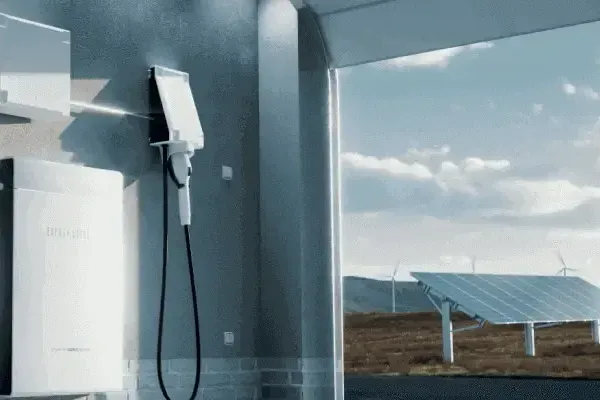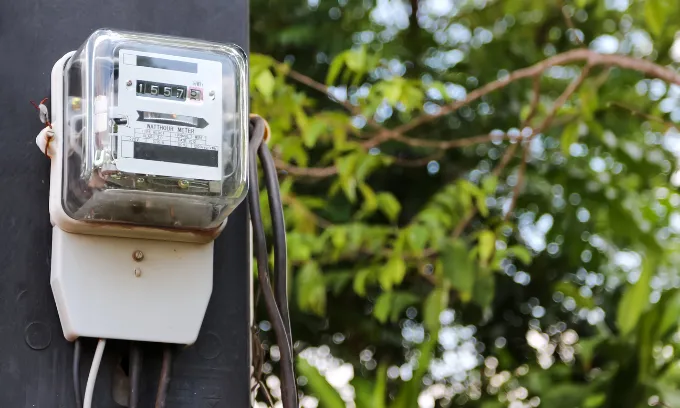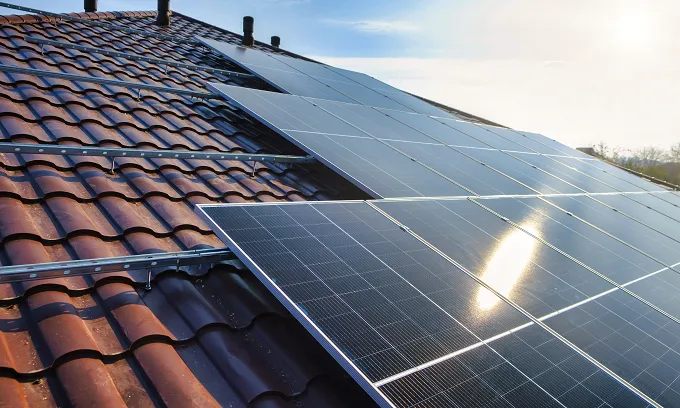What is the average electricity price per kWh?
Electricity retailers charge between 24c and 43c for every kWh of electricity used, depending on your state, electricity distribution network and electricity tariff.
The cost of using electricity is referred to as a ‘usage charge’ or 'usage rate'. A usage charge is a variable cost for every kilowatt hour (kWh) of electricity you use.
The following information shows the average usage rate per kWh for single rate tariffs across each distribution network in NSW, VIC, SEQ, SA, the ACT and TAS, based on electricity plans available from providers in the Canstar database.
State | Distributor | Average rate/kWh |
|---|---|---|
NSW | Ausgrid | 36.7c/kWh |
NSW | Endeavour Energy | 37.0c/kWh |
NSW | Essential Energy | 40.6c/kWh |
VIC | CitiPower | 26.4c/kWh |
VIC | Jemena | 28.6c/kWh |
VIC | Powercor | 29.2c/kWh |
VIC | AusNet Services | 33.5c/kWh |
VIC | United Energy | 28.0c/kWh |
QLD | Energex | 33.7c/kWh |
SA | SA Power Network | 44.1c/kWh |
ACT | EvoEnergy | 30.2c/kWh |
TAS | TasNetworks | 27.9c/kWh |
Source: www.canstar.com.au - 11/09/2025. Average electricity usage rates are based on non-solar only plans on Canstar's database, available for annual usages based on the reference usage amounts for each distributor for single rate plans: NSW, VIC, QLD, and SA per AER, VIC per Victorian Default Offer, ACT per ICRC, TAS per the median usage in the Office of the Tasmanian Regulator's report, Typical Electricity Customers in Tasmania 2022.
South Australians, on average, pay the highest electricity prices per kWh, in addition to often missing out on the big discounts and bonus perks frequently available in other states.
In comparison, households in VIC and TAS generally pay the lowest prices per kWh.
Keep in mind that usage charges are one of two charges that need to be paid on any energy plan, the other being supply charges. A supply charge is a fixed cost (in c/day) you pay to remain connected to the grid.
The table below shows the average annual cost of some of the cheapest electricity plans in Australia, including both supply and usage charges:
Energy plans in NSW
Provider | Plan name | Est. annual cost (inc. all discounts) | Est. annual cost (ex. conditional discounts) | Reference price comparison (Basic Plan Information) |
|---|---|---|---|---|
Kogan | Kogan Energy for current FIRST members | $1,491 | $1,591 | 19% less |
GloBird Energy | BOOST Residential (Flat Rate)-Ausgrid | $1,518 | $1,518 | 23% less |
Momentum Energy | Warm Welcome | $1,548 | $1,548 | 21% less |
Sumo | Sumo Sunrise | $1,554 | $1,554 | 21% less |
Energy plans in QLD
Provider | Plan name | Est. annual cost (inc. all discounts) | Est. annual cost (ex. conditional discounts) | Reference price comparison (Basic Plan Information) |
|---|---|---|---|---|
Kogan | Kogan Energy for current FIRST members | $1,681 | $1,781 | 17% less |
GloBird Energy | GLOSAVE Residential (Flat Rate)-Energex | $1,763 | $1,817 | 15% less |
Alinta Energy | HomeDeal Select | $1,779 | $1,779 | 17% less |
Sumo | Sumo Sunrise | $1,811 | $1,811 | 15% less |
Energy plans in SA
Provider | Plan name | Est. annual cost (inc. all discounts) | Est. annual cost (ex. conditional discounts) | Reference price comparison (Basic Plan Information) |
|---|---|---|---|---|
GloBird Energy | GLOSAVE Residential (Flat Rate)-SAPN | $1,758 | $1,812 | 21% less |
ENGIE | SA _ENGIE Perks Elec | $1,910 | $1,910 | 17% less |
Kogan | Kogan Energy for current FIRST members | $1,918 | $2,018 | 12% less |
Momentum Energy | Warm Welcome | $1,970 | $1,970 | 14% less |
Energy plans in VIC
Provider | Plan name | Est. annual cost (inc. all discounts) | Est. annual cost (ex. conditional discounts) | Reference price comparison (Energy Fact Sheet) |
|---|---|---|---|---|
Kogan | Kogan Energy for current FIRST members | $1,200 | $1,300 | 16% less |
ENGIE | ENGIE Everyday | $1,236 | $1,236 | 20% less |
Sumo | Sumo Sunrise | $1,238 | $1,238 | 20% less |
OVO Energy | The One Plan | $1,291 | $1,291 | 16% less |
What is a kWh?
A kWh stands for ‘kilowatt hour’, which is a unit of energy that measures how much electricity your home has used.
K stands for ‘kilo’ or 1,000, W stands for ‘watt’, which is a measure of power and ‘h’ stands for hour.
Appliances are often described in terms of their wattage or the power they require to run. If you run a 1,000 watt (1kW) appliance for one hour, then that will use one kWh. If you run a 5kW air conditioner for one hour, then that would use 5kWh of electricity. One 100 watt light bulb, on the other hand, would take 10 hours to use one kWh.
What’s the difference between a kW and kWh?
A kW is a measurement of power showing how much energy an appliance uses, while a kWh is a unit of energy measuring how much power is used at an hourly rate.
For example, a 4kW solar panel system has a maximum power output of 4kW. If that output was sustained over an hour, then the solar system would produce 4 kWh of electricity. If it maintains that solar output for four hours, then that system will produce 16 kWh.
How are kWh costs calculated on your electricity bill?
Your home’s electricity usage (in kWh) is recorded by your electricity meter and passed on to your retailer for billing. Your bill will detail how many kWhs were used according to the meter.
If you have a smart meter installed, your usage data will be transmitted remotely to your provider.
If you’re still running a legacy meter, your provider will have to send someone to your home to conduct a manual meter read. Your energy company may have to estimate your usage if your meter cannot be accessed safely.
However, the kWh cost of your electricity use is only one part of your electricity bill. Other contributors are:
- The daily supply charge: Regardless of how much electricity you’ve used, you’ll have to pay a daily supply charge on all electricity plans.
- The usage rates of the distribution zone you live in: As seen in the first table above, different distributors charge different usage rates. This cost is determined by factors such as transmission and wholesale purchase costs.
- Your electricity tariff: A tariff refers to an electricity plan’s pricing structure. The tariff you have chosen will determine how you pay for your electricity.
Where do I find a retailer's electricity cost per kWh?
Energy retailers are required to publish their plans’ exact costs in their price fact sheets, including a plan's electricity prices per kWh.
In NSW, SA, QLD, TAS and ACT, these sheets are called Basic Product Information Documents (BPIDs).
In VIC, they're called Victorian Energy Fact Sheets (VEFs). In these documents, you will find all the details you need to make an informed decision about that retailer’s electricity price per kWh.
Energy price fact sheets are readily accessible from:
- Your retailer's website.
- Your welcome pack after you sign up for a plan.
- Through Canstar’s energy comparison platform, under the ‘basic plan information’ prompts below each plan.
- The government's Energy Made Easy database.
While energy price fact sheets can differ between states, the details about electricity usage costs per kWh usually appear at the top of the page.
Be sure to focus on the electricity usage rates that include GST, as this will be what you actually pay.
If you have a flexible pricing tariff, your fact sheet will also show the varying usage charges based on time of use or block rates.
How do I find a plan with the best electricity cost per kWh?
When comparing electricity plans, it’s important to consider more than just big discounts or low usage rates. Here are a few features to look out for in an energy plan to get the best overall value:
- Discounts: Typically apply to usage or usage and supply rates for a period of time. Some discounts may only apply if certain conditions are satisfied, like paying on time or setting up direct debit payments.
- Bill credits: Some retailers offer credits off bills to customers who sign up online or bundle their utilities with the same company, such as electricity and gas, or even internet. Energy bill credits are either a once-off or an ongoing feature.
- Rewards programs: Energy providers in partnership with various companies may offer exclusive rewards to customers. Some rewards include frequent flyer points, shopping vouchers and movie tickets.
- Entertainment packages: Some energy plans offer bonus entertainment features (e.g. subscriptions to a streaming service, tickets to a zoo). However, these offers can change frequently.
- Customer service: Compare call center hours availability, smartphone apps and website functionality. Quality customer service is just as important as price. You can begin comparing with Canstar’s energy comparison network, which will allow you to search for the cheapest or best value plans available in your postcode.
Keep in mind that generous discounts, bill credits and rewards programs could be hiding much higher electricity rates. In this situation, you may end up paying more than you’re actually saving. Always study all of a plan’s features instead of just focusing on one.
FAQs about average electricity cost per kWh
Electricity usage charges are deregulated in most states, which means energy companies set the electricity price per kWh. However, electricity retailers don’t set prices arbitrarily — their prices largely reflect the wholesale price of electricity that is set by generators.
Electricity rates generally change every 12 months for most customers, though it depends on whether you’re on a standing offer or a market offer.
Customers on a standard offer contract are guaranteed by law that their electricity charges won’t increase more than once every 12 months.
Customers on a market offer may technically have their rates adjusted at any time, provided they're given advanced written notice. These electricity contracts are known as 'variable rate plans'.
The alternative to a variable rate plan is known as a fixed rate plan. Customers on a fixed rate plan receive a guarantee that their electricity prices won’t increase for a fixed period of time – usually one or two years.
Only a handful of retailers currently offer fixed rate deals. While they may be more expensive upfront, they can potentially save you in the long term if energy prices increase.
You can compare market offer prices against your state’s reference price to see if you will be getting value for money.
The electricity reference price is basically a price cap for energy suppliers when they set their standing offer plans. It also acts as a reference to compare energy plans against. Customers are automatically assigned to the standing offer plan if the contract term expires.
The reference price is set by the state’s regulators and is called the Default Market Offer (DMO) in NSW, QLD, SA and the Victorian Default Offer (VDO) in Victoria.








